Owning a classic car is a point of pride for many enthusiasts, and insuring it properly is essential for protecting its value. However, classic automobile insurance comes with unique considerations compared to standard auto insurance, and it’s easy to make mistakes that could affect coverage or increase costs. Understanding these pitfalls can help you secure the right policy for your prized vehicle. Here are some common mistakes to avoid when getting insurance for classic cars and tips to ensure optimal coverage.
Using Standard Car Insurance
Standard policies are designed for everyday vehicles that depreciate over time, while classic cars are often valued based on collectible worth, which may increase over time. This is what makes Alex Manos car buyer interested in getting the coverage. Standard insurance may not cover the total value of a classic car, especially when it comes to rare or custom parts that can be expensive to repair or replace.
Opt for classic car insurance, designed to provide “agreed value” coverage. It means you and the insurer agree on the car’s value upfront, ensuring that you receive compensation based on that agreed amount rather than a depreciated value in the event of a total loss.
Skipping Mileage Limitations and Use Restrictions
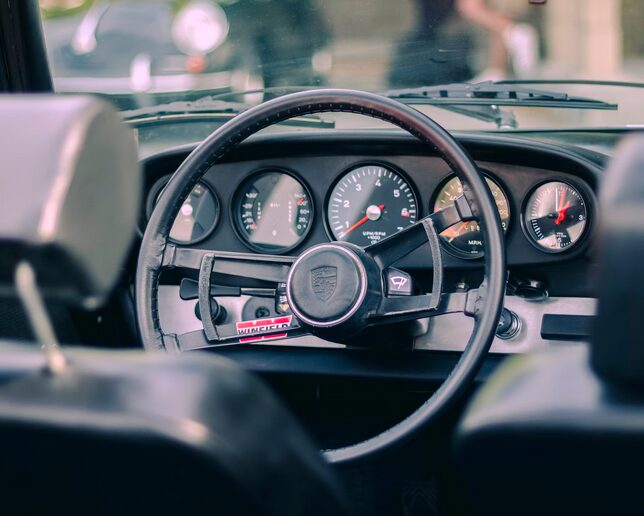
Classic car insurance policies are designed for vehicles not used as primary transportation and assume that the car will be driven occasionally or for special events. If you exceed the mileage limit or use the car as a daily driver, it could invalidate your coverage in the event of a claim. Ensure you know the vehicle’s mileage limits and acceptable uses under your policy.
Some insurers may offer flexible mileage options or expanded usage plans if you plan to drive your car more frequently. Being transparent about your usage intentions can help you find a policy that fits your lifestyle without risking coverage.
Underestimating the Car’s Value
Classic cars can be difficult to value, significantly if restored or modified. Some owners mistake undervalue their vehicles, leading to inadequate coverage in case of damage or loss. The car’s market value may have increased over time due to its collectible status or modifications, and it’s essential to account for these changes in your insurance policy.
Get a professional appraisal to determine the car’s accurate value before securing insurance. A documented appraisal helps establish a clear value for your vehicle and ensures you’re compensated relatively if a claim is made. Re-evaluating your car’s worth regularly helps you keep coverage in line with market value fluctuations.
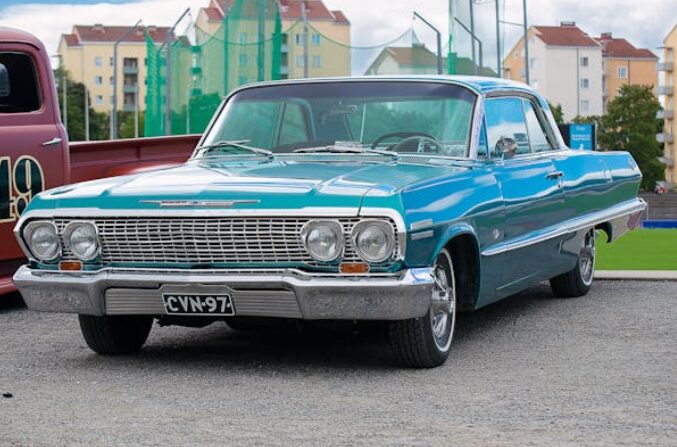
Not Comparing Policies
Classic car insurance policies vary widely between providers, and settling for the first offer can result in overpaying or missing out on essential coverages. Some policies may offer lower premiums but exclude specific protections, while others may have more comprehensive options at a higher cost.
It’s beneficial to compare quotes and coverage options from multiple insurers. Look at factors like premium cost, coverage limits, specialized add-ons, and the company’s experience with classic cars. By thoroughly comparing, you can find a policy that balances affordability with sufficient protection for your vehicle.






 Revenue projection is the cornerstone of financial planning for startups. It typically involves estimating how much income or money your business will generate over a specific period. By analyzing market trends, customer behavior, and sales data, you can make informed predictions about your future income.
Revenue projection is the cornerstone of financial planning for startups. It typically involves estimating how much income or money your business will generate over a specific period. By analyzing market trends, customer behavior, and sales data, you can make informed predictions about your future income.  Have you ever heard the saying, “expect the unexpected”? Well, that’s where scenario planning comes into play for startups. It involves creating different scenarios based on various factors like market conditions, competition, and internal challenges. By mapping out potential
Have you ever heard the saying, “expect the unexpected”? Well, that’s where scenario planning comes into play for startups. It involves creating different scenarios based on various factors like market conditions, competition, and internal challenges. By mapping out potential 





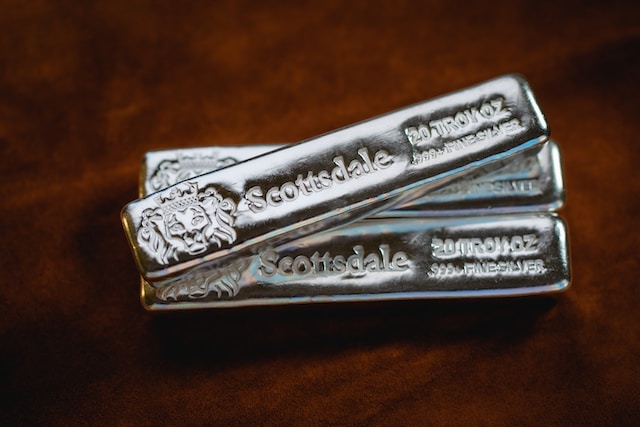
 When it comes to silver, it’s not just about its aesthetic appeal. This versatile metal has a strong industrial demand that gives it an edge as an investment option. Silver is widely used in various industries, including electronics, solar energy, medical technology, and automotive manufacturing. Silver plays a crucial role in producing smartphones, tablets, computers, and other high-tech gadgets in the electronics industry alone. Its exceptional conductivity makes it ideal for electrical contacts and circuit boards. With the ever-growing demand for these devices worldwide, the need for silver continues to rise.
When it comes to silver, it’s not just about its aesthetic appeal. This versatile metal has a strong industrial demand that gives it an edge as an investment option. Silver is widely used in various industries, including electronics, solar energy, medical technology, and automotive manufacturing. Silver plays a crucial role in producing smartphones, tablets, computers, and other high-tech gadgets in the electronics industry alone. Its exceptional conductivity makes it ideal for electrical contacts and circuit boards. With the ever-growing demand for these devices worldwide, the need for silver continues to rise. Unlike paper currencies that can be devalued by inflation, silver has historically retained its value and even surged during times of rising prices. As a tangible asset with intrinsic worth, it offers a level of security that other investments simply cannot match. Silver’s unique properties make it an attractive option for investors looking to protect their wealth. Its demand extends far beyond jewelry and collectibles – it plays an integral role in various industries such as electronics, solar energy, and healthcare.
Unlike paper currencies that can be devalued by inflation, silver has historically retained its value and even surged during times of rising prices. As a tangible asset with intrinsic worth, it offers a level of security that other investments simply cannot match. Silver’s unique properties make it an attractive option for investors looking to protect their wealth. Its demand extends far beyond jewelry and collectibles – it plays an integral role in various industries such as electronics, solar energy, and healthcare.





 When investing in gold, understanding the market dynamics is crucial. Gold prices can be influenced by various factors, such as economic conditions, geopolitical events, and even investor sentiments. You can access their expertise and insights into these complex market forces by consulting a financial advisor. A financial advisor can help you analyze historical trends and patterns in the gold market. They have their finger on the pulse of global markets and can provide valuable guidance on when to buy or sell based on your investment goals.
When investing in gold, understanding the market dynamics is crucial. Gold prices can be influenced by various factors, such as economic conditions, geopolitical events, and even investor sentiments. You can access their expertise and insights into these complex market forces by consulting a financial advisor. A financial advisor can help you analyze historical trends and patterns in the gold market. They have their finger on the pulse of global markets and can provide valuable guidance on when to buy or sell based on your investment goals.

 When it comes to finding the best insurance deal, shopping around is key. Don’t just settle for the first quote you receive from your current provider or a single other insurer. Take the time to do some research and get multiple quotes from different companies. One effective way to shop around is by using an online comparison tool. These tools allow you to enter your information once and receive quotes from multiple insurers in one place, making it easy to compare prices and coverage options.
When it comes to finding the best insurance deal, shopping around is key. Don’t just settle for the first quote you receive from your current provider or a single other insurer. Take the time to do some research and get multiple quotes from different companies. One effective way to shop around is by using an online comparison tool. These tools allow you to enter your information once and receive quotes from multiple insurers in one place, making it easy to compare prices and coverage options.
 If you’re looking to keep your insurance costs low, bundling policies is worth considering. Many insurers offer discounts when you purchase multiple
If you’re looking to keep your insurance costs low, bundling policies is worth considering. Many insurers offer discounts when you purchase multiple 
 When you owe no money to anyone, you will have total control over your finances and can use your money in whatever way you wish without worrying about monthly payments and interest rates. You can use your money for investments, vacations, or anything else you choose to do with it.
When you owe no money to anyone, you will have total control over your finances and can use your money in whatever way you wish without worrying about monthly payments and interest rates. You can use your money for investments, vacations, or anything else you choose to do with it. When debt-free, you will have more time to do things you love. You won’t be tied down by monthly payments and can use your money for the things that matter the most to you. Living a debt-free life is not easy, but it is possible with careful planning and budgeting. The benefits of living without debt are far greater than any potential drawbacks. When you live a debt-free life, you will have more financial freedom, less stress, better credit scores, peace of mind, and more time to do the things that matter the most to you.
When debt-free, you will have more time to do things you love. You won’t be tied down by monthly payments and can use your money for the things that matter the most to you. Living a debt-free life is not easy, but it is possible with careful planning and budgeting. The benefits of living without debt are far greater than any potential drawbacks. When you live a debt-free life, you will have more financial freedom, less stress, better credit scores, peace of mind, and more time to do the things that matter the most to you.


 It’s no surprise that the price and market capitalization of the stock are two of the most important factors to consider when screening stocks using technical analysis. Price is simply the cost of buying one share in the company, while market capitalization measures how much money has been invested into a particular stock. Learn how to read the stock charts and identify moving averages, support and resistance levels, and other important indicators. It will help you determine whether the stock will likely go up or down in value.
It’s no surprise that the price and market capitalization of the stock are two of the most important factors to consider when screening stocks using technical analysis. Price is simply the cost of buying one share in the company, while market capitalization measures how much money has been invested into a particular stock. Learn how to read the stock charts and identify moving averages, support and resistance levels, and other important indicators. It will help you determine whether the stock will likely go up or down in value. In simple terms, momentum is the rate at which a stock’s price changes over time. This can be measured in various ways, such as by looking at the moving average of its closing prices. By looking at the momentum of a stock’s movements, you can gain insight into how it might perform in the future and whether or not now is the right time to buy or sell.
In simple terms, momentum is the rate at which a stock’s price changes over time. This can be measured in various ways, such as by looking at the moving average of its closing prices. By looking at the momentum of a stock’s movements, you can gain insight into how it might perform in the future and whether or not now is the right time to buy or sell.
 You should also ensure that your
You should also ensure that your 
 Typically, personal loans are unsecured, meaning they are not secured by collateral. This makes personal loans a bigger risk for lenders. Hence their interest rates are often higher than those of other forms of loans. However, consumers with good credit who need to finance a significant purchase or consolidate debt may benefit from personal loans. Compare rates and terms from multiple lenders when searching for a personal loan.
Typically, personal loans are unsecured, meaning they are not secured by collateral. This makes personal loans a bigger risk for lenders. Hence their interest rates are often higher than those of other forms of loans. However, consumers with good credit who need to finance a significant purchase or consolidate debt may benefit from personal loans. Compare rates and terms from multiple lenders when searching for a personal loan.
 If you’re using all your extra money to pay off debt, then you will not have anything left over to save. This situation makes it challenging to build an emergency fund or save for retirement. Only a tiny percentage of people know how to handle money and are on track with their finances.
If you’re using all your extra money to pay off debt, then you will not have anything left over to save. This situation makes it challenging to build an emergency fund or save for retirement. Only a tiny percentage of people know how to handle money and are on track with their finances. Debt can cause a lot of financial stress. This is because you’re constantly worrying about how you will make your payments. Additionally, debt can be overwhelming and make it challenging to stay on top of your finances.
Debt can cause a lot of financial stress. This is because you’re constantly worrying about how you will make your payments. Additionally, debt can be overwhelming and make it challenging to stay on top of your finances.
 One of the most important things you can do as a single mom is to create a budget and stick to it. It will help you keep track of your expenses and ensure that you’re not spending more than you can afford. There are plenty of helpful resources online that can help you get started. Creating a budget is only half the battle. Once you have a budget, you need to make sure that you stick to it. It’s difficult at times, but it’s important to remember that every penny counts. There are plenty of helpful resources online that can help you stay on track.
One of the most important things you can do as a single mom is to create a budget and stick to it. It will help you keep track of your expenses and ensure that you’re not spending more than you can afford. There are plenty of helpful resources online that can help you get started. Creating a budget is only half the battle. Once you have a budget, you need to make sure that you stick to it. It’s difficult at times, but it’s important to remember that every penny counts. There are plenty of helpful resources online that can help you stay on track. As a single mom, you may be eligible for certain government benefits. These benefits can help you make ends meet and provide for your family. Please do some research to see what benefits you may be eligible for and how to apply for them. The tips above can help you achieve financial independence as a single mom. It’s important to remember that it takes time and consistency to reach your goals. But if you stay focused and dedicated, you’ll get there eventually. Just keep moving forward one day at a time.
As a single mom, you may be eligible for certain government benefits. These benefits can help you make ends meet and provide for your family. Please do some research to see what benefits you may be eligible for and how to apply for them. The tips above can help you achieve financial independence as a single mom. It’s important to remember that it takes time and consistency to reach your goals. But if you stay focused and dedicated, you’ll get there eventually. Just keep moving forward one day at a time.
 When you retire, you want to have a nest egg that you can depend on. You don’t want to have to worry about whether or not your investments will hold their value. You want to be able to relax and enjoy your retirement years.
When you retire, you want to have a nest egg that you can depend on. You don’t want to have to worry about whether or not your investments will hold their value. You want to be able to relax and enjoy your retirement years.

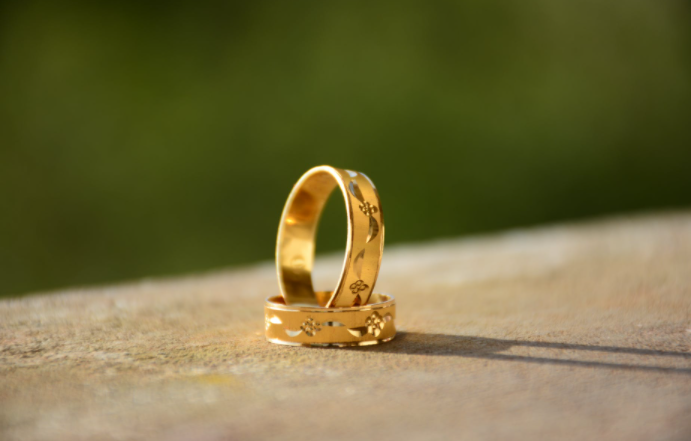 When you consult with precious metals experts, you can get insights into the industry that you wouldn’t be able to get anywhere else. They can help you understand how to get the best value for your money and make sure that you’re investing in something that will hold its value over time.
When you consult with precious metals experts, you can get insights into the industry that you wouldn’t be able to get anywhere else. They can help you understand how to get the best value for your money and make sure that you’re investing in something that will hold its value over time. When you consult with precious metals experts, they can provide you with a range of options to meet your needs and budget.
When you consult with precious metals experts, they can provide you with a range of options to meet your needs and budget.
 Choosing the right bank will be vital in
Choosing the right bank will be vital in  As banks will not offer their services for free, it is essential to be aware of the different types of charges applied should your business decide to bank with them. The most common type of charge is the monthly account keeping fee, ranging from $0 to over $100 a month. Other expenses include fees for transactions such as deposits and withdrawals, cheques, overdrafts, and foreign currency.
As banks will not offer their services for free, it is essential to be aware of the different types of charges applied should your business decide to bank with them. The most common type of charge is the monthly account keeping fee, ranging from $0 to over $100 a month. Other expenses include fees for transactions such as deposits and withdrawals, cheques, overdrafts, and foreign currency.
 If you’re going to keep a significant amount of money in exchange, security should be the number one thing you look for. You want your coins stored there as long-term investments or trading tools, so they must be secure from theft and other cyber-attacks.
If you’re going to keep a significant amount of money in exchange, security should be the number one thing you look for. You want your coins stored there as long-term investments or trading tools, so they must be secure from theft and other cyber-attacks. Exchanges can make a lot of money by charging high fees, which can often drive away customers. Look for an exchange with reasonable prices across the board – buying and selling, deposits and withdrawals. There’s no need to overpay when you’re already taking on risks by investing in cryptocurrencies!
Exchanges can make a lot of money by charging high fees, which can often drive away customers. Look for an exchange with reasonable prices across the board – buying and selling, deposits and withdrawals. There’s no need to overpay when you’re already taking on risks by investing in cryptocurrencies! One of the most appealing features of cryptocurrency trading is that there are so many options to choose from. Many exchanges have a limited number of cryptocurrencies or ones that they prefer for some reason. These restrictions can make it challenging to invest in something different from those exchanges offer. The best exchange will have several popular currencies and some of the more obscure ones. It gives you various options to choose from and increases your chances of finding an investment that will pay off.
One of the most appealing features of cryptocurrency trading is that there are so many options to choose from. Many exchanges have a limited number of cryptocurrencies or ones that they prefer for some reason. These restrictions can make it challenging to invest in something different from those exchanges offer. The best exchange will have several popular currencies and some of the more obscure ones. It gives you various options to choose from and increases your chances of finding an investment that will pay off.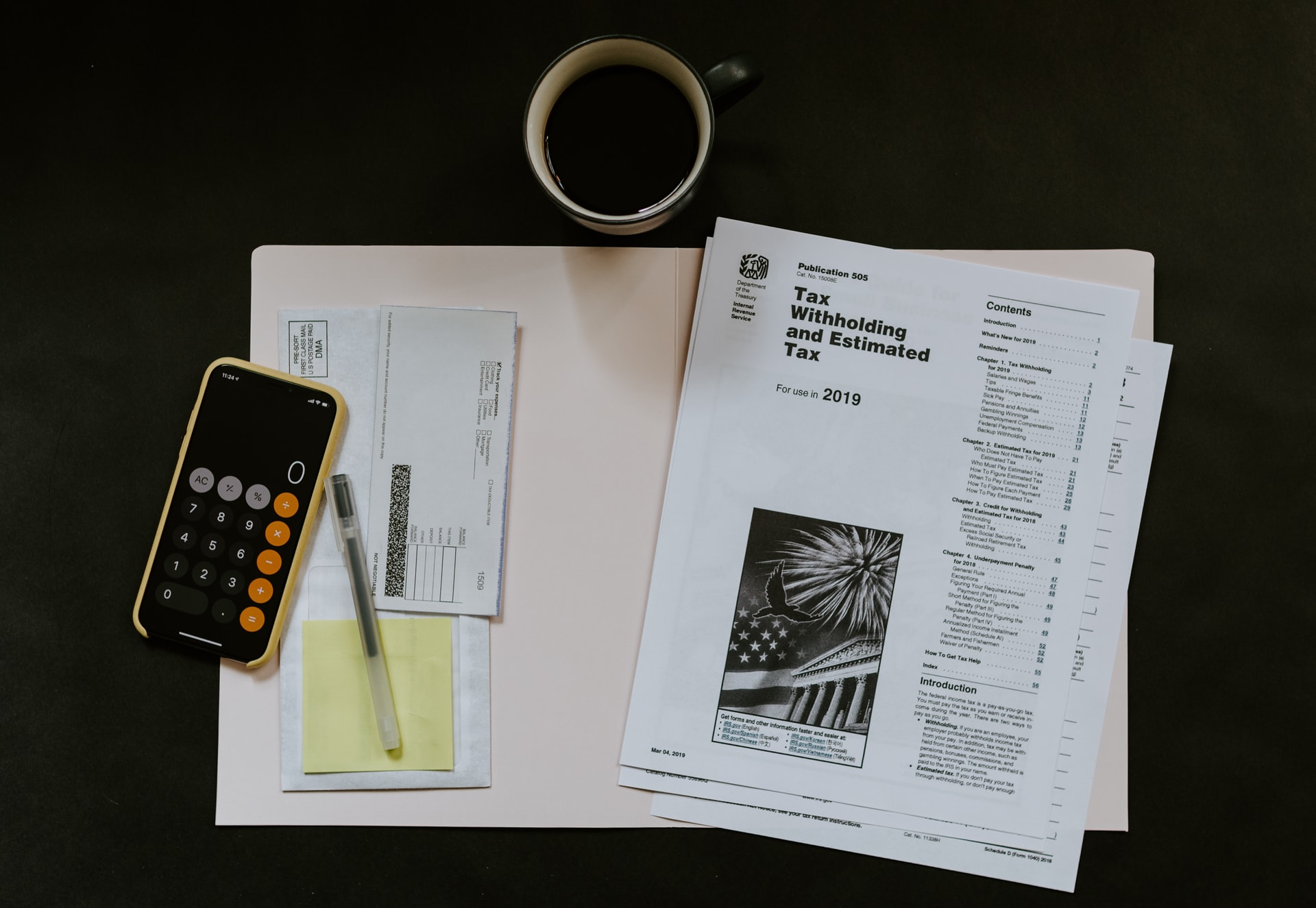
 ne of the simplest things that you can do to minimize your taxes is to track all of your expenses. This means keeping track of all the receipts for anything you purchase related to your business. This might include office supplies, travel expenses, or any other costs associated with running your company. Not only will this help you keep tabs on how much money you are spending, but it will also help you minimize your taxes.
ne of the simplest things that you can do to minimize your taxes is to track all of your expenses. This means keeping track of all the receipts for anything you purchase related to your business. This might include office supplies, travel expenses, or any other costs associated with running your company. Not only will this help you keep tabs on how much money you are spending, but it will also help you minimize your taxes. The best way to figure out how to minimize your taxes is to talk to a tax advisor. They will help you understand all of the different options available to you and tell you which ones will work best for your business. They can also help you keep track of any changes in the tax code that might affect your company. A tax advisor will also help you understand the tax implications of any major business decisions that you make.
The best way to figure out how to minimize your taxes is to talk to a tax advisor. They will help you understand all of the different options available to you and tell you which ones will work best for your business. They can also help you keep track of any changes in the tax code that might affect your company. A tax advisor will also help you understand the tax implications of any major business decisions that you make. 
 To have a better chance of being approved by lenders, you need to review your credit score before applying. If the lender sees that your rating is over 550 or higher on both major bureaus (Experian & Equifax), they will approve most applications. If your score is below 650, you might want to do some credit repair or wait until it rises. Review the lender’s requirements for fast loans. This way, you can be sure that you are prepared to get the approval. Ask for more information about fast loans before applying. Some companies will ask for your tax returns, W-forms, bank statements, and other personal files, so they know how much money you make every month.
To have a better chance of being approved by lenders, you need to review your credit score before applying. If the lender sees that your rating is over 550 or higher on both major bureaus (Experian & Equifax), they will approve most applications. If your score is below 650, you might want to do some credit repair or wait until it rises. Review the lender’s requirements for fast loans. This way, you can be sure that you are prepared to get the approval. Ask for more information about fast loans before applying. Some companies will ask for your tax returns, W-forms, bank statements, and other personal files, so they know how much money you make every month.
 A 401(k) gold rollover retirement plan is one of the easiest and user-friendly retirement plans available. You can quickly sign up for your 401(k) online, and it takes less than five minutes to get started! This ease of use makes signing up for a 401(k) incredibly easy, even if you are busy or don’t have much spare time on your hands.
A 401(k) gold rollover retirement plan is one of the easiest and user-friendly retirement plans available. You can quickly sign up for your 401(k) online, and it takes less than five minutes to get started! This ease of use makes signing up for a 401(k) incredibly easy, even if you are busy or don’t have much spare time on your hands. Having flexibility in your savings plan is vital to many people, and signing up for a 401(k) delivers. You can choose between different funds that are tailored toward either short-term or long-term goals like retirement (or even both), making it easy to save the way you want! Besides, it doesn’t have any age or retirement amount limit to prevent your plan from becoming fruition.
Having flexibility in your savings plan is vital to many people, and signing up for a 401(k) delivers. You can choose between different funds that are tailored toward either short-term or long-term goals like retirement (or even both), making it easy to save the way you want! Besides, it doesn’t have any age or retirement amount limit to prevent your plan from becoming fruition.


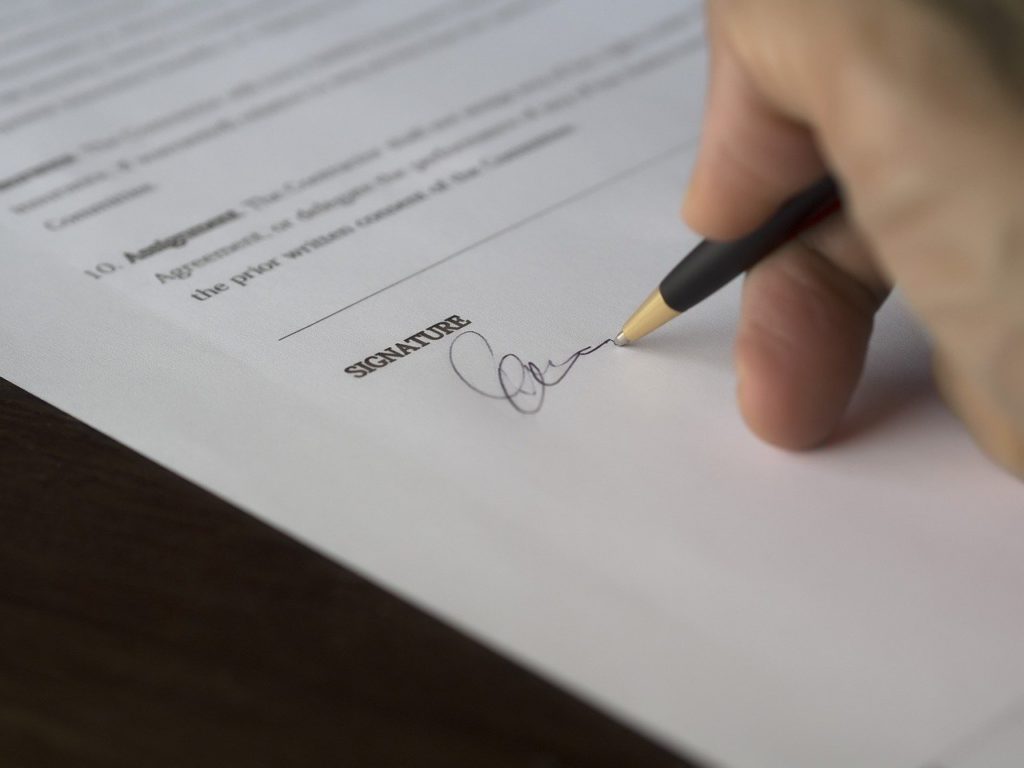







 One of the main benefits of this type of insurance is that it protects your business from the loss or non-use of your business assets. Investing in this type of insurance will ensure that your organization has all the time it needs. Even if your entire facility has been affected by a fire, or if your tax records and client documents have been lost or destroyed in a flood, the insurance company will be able to help you recover from this reduction, as long as they have the right coverage that can cover you for your business.
One of the main benefits of this type of insurance is that it protects your business from the loss or non-use of your business assets. Investing in this type of insurance will ensure that your organization has all the time it needs. Even if your entire facility has been affected by a fire, or if your tax records and client documents have been lost or destroyed in a flood, the insurance company will be able to help you recover from this reduction, as long as they have the right coverage that can cover you for your business. An additional benefit of this policy is that it can cover your prices to repair your home or perhaps replace it. Commercial property insurance may also have the ability to compensate for things that cannot be replaced, such as collectibles or photographs. Therefore, it is a better option for business owners to choose commercial property insurance as it will cover both temporary and permanent damages caused by the home. Whether it is natural or man-made disasters that can cause damage to the home, insurers can assess the damages and compensate them in exactly the same way.
An additional benefit of this policy is that it can cover your prices to repair your home or perhaps replace it. Commercial property insurance may also have the ability to compensate for things that cannot be replaced, such as collectibles or photographs. Therefore, it is a better option for business owners to choose commercial property insurance as it will cover both temporary and permanent damages caused by the home. Whether it is natural or man-made disasters that can cause damage to the home, insurers can assess the damages and compensate them in exactly the same way.
 A person’s credit score is a number that lenders can use for almost any loan. This amount varies when businesses report their tax debt repayment status. Health care debts, credit cards, living expenses, and other accounts a person may include in their credit score. If someone pays on time and without delay or is late in paying, this will be disclosed. If someone declares bankruptcy, this is considered in the credit score. In fact, this is one of the most important thing that you should keep in mind before even going to a lender or a bank. This will make things easier for you and the bank.
A person’s credit score is a number that lenders can use for almost any loan. This amount varies when businesses report their tax debt repayment status. Health care debts, credit cards, living expenses, and other accounts a person may include in their credit score. If someone pays on time and without delay or is late in paying, this will be disclosed. If someone declares bankruptcy, this is considered in the credit score. In fact, this is one of the most important thing that you should keep in mind before even going to a lender or a bank. This will make things easier for you and the bank. Lenders usually require a credit score for a certain amount before they will consider a loan. The credit score will also find out if the person needs a cosigner on their loan. This can be considered a credit card payment or even balloons on a car or home loan. Secured loans are a dangerous element in the equation because they risk getting out of control and can prevent the lender from receiving your annual payment. Once you pay off your debts, your credit score will increase and people’s annual budgets will also decrease, giving them a much better chance of being approved for the loan they are applying for.
Lenders usually require a credit score for a certain amount before they will consider a loan. The credit score will also find out if the person needs a cosigner on their loan. This can be considered a credit card payment or even balloons on a car or home loan. Secured loans are a dangerous element in the equation because they risk getting out of control and can prevent the lender from receiving your annual payment. Once you pay off your debts, your credit score will increase and people’s annual budgets will also decrease, giving them a much better chance of being approved for the loan they are applying for.